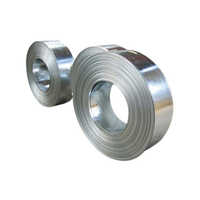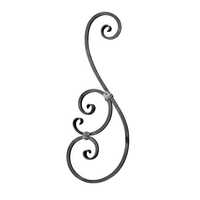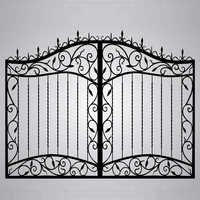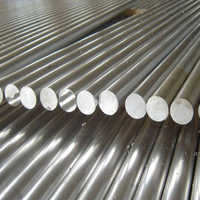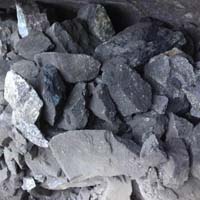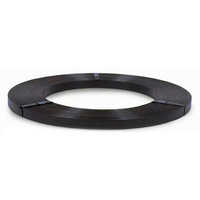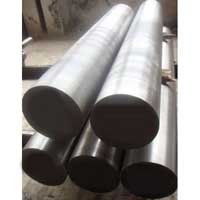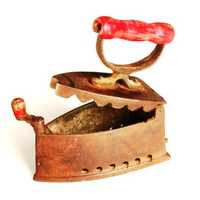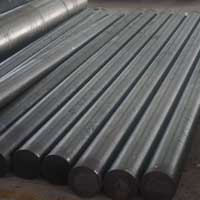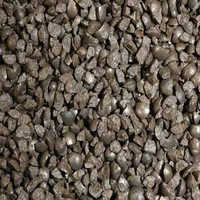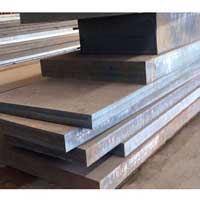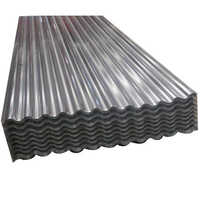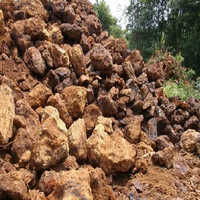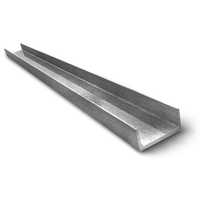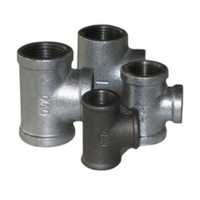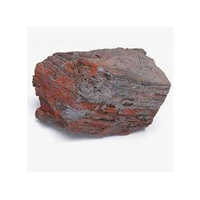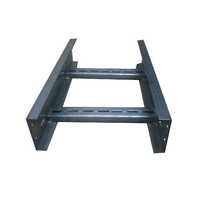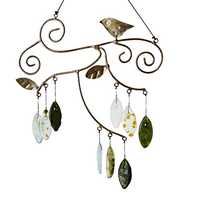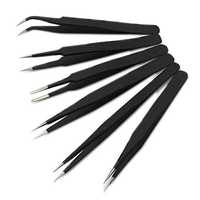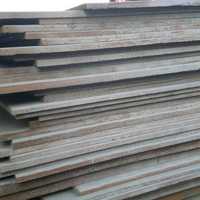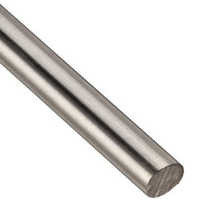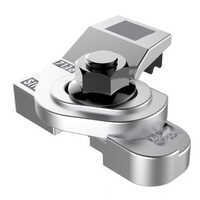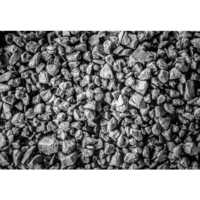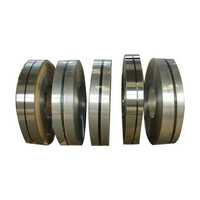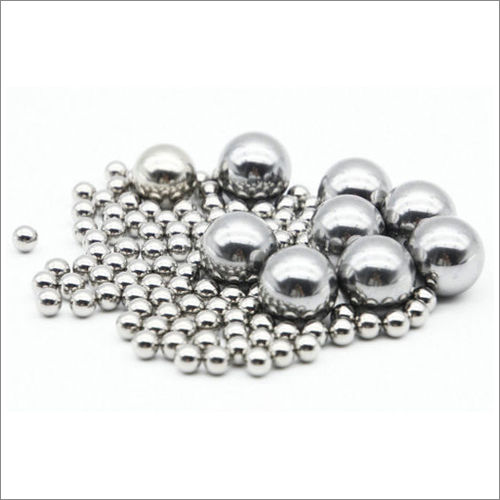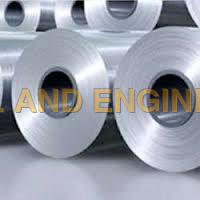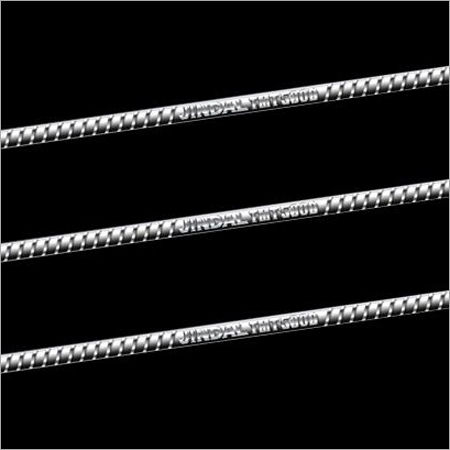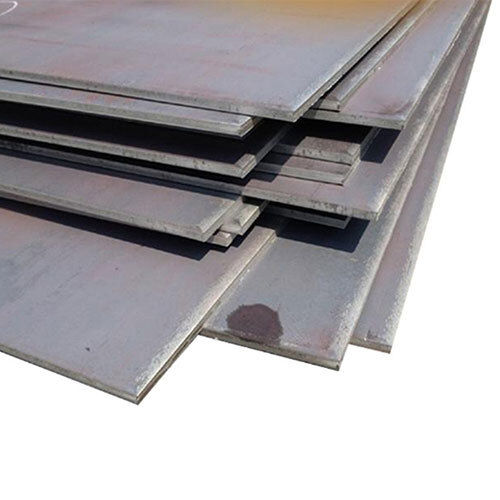Iron & Steel
(9597 products)
Explore More Categories
Product Showcase
Alloy Steel Coils
Price Trend: 160.00 - 190.00 INR (Approx.)/Kilograms
MOQ - 20 Kilograms/Kilograms
22 Years
Business Type: Manufacturer | Supplier
NIKO STEEL AND ENGINEERING LLP
Made in India
Grey Iron Rod
Usage - Construction
Surface Treatment - Polished
Product Type - Iron
14 Years
Business Type: Manufacturer | Supplier
JINDAL ROLLING MILLS LTD.
Indian Inquiries Only
Made in India
Silver High Tensile Plates En10028 S690Ql
Price: 120 INR (Approx.)/Kilograms
MOQ - 1 Kilograms/Kilograms
Surface Treatment - Polished
Usage - Industrial
Product Type - Steel
4 Years
Response Rate: 94.44%
Business Type: Manufacturer | Distributor
SHYAM METALS & ALLOYS
Indian Inquiries Only
Cutting Steel for Pharmaceuticals
Price Trend: 100.00 - 1000.00 INR (Approx.)/Kilograms
MOQ - 50 Kilograms/Kilograms
14 Years
Business Type: Distributor | Supplier
VISHAL STEEL INDUSTRIES
Indian Inquiries Only
Ductile Grade Pig Iron Grade: Astm
Price Trend: 65000.00 - 250000.00 INR (Approx.)/Metric Ton
MOQ - 17 Metric Ton/Metric Tons
Usage - It is used in a wide variety of industrial applications, including pipe, automotive components, gear boxes, wheels, pump housings, machine frames for the wind-power industry, and many more.
Product Type - Iron
Grade - ASTM
8 Years
Business Type: Exporter
APOCALYPSE STEEL AND POWER LIMITED
Made in India
Steel Industrial Ms Channel
Price: 6800 INR (Approx.)/Ton
MOQ - 25 Ton/Tons
Surface Treatment - Polished
Usage - Commercial
Product Type - Steel
3 Years
Business Type: Manufacturer | Supplier
KESHAV ENGINEERING
Made in India
Aluminized Steel Coils Application: Automobile Industry
Price Trend: 75.00 - 100.00 INR (Approx.)/Kilograms
MOQ - As per Customers Requirement Kilograms/Kilograms
Surface Treatment - Coated
Product Type - Steel
Shape - Other
11 Years
Business Type: Manufacturer | Exporter
JMT STEEL-DOSHI STEEL GROUP
Made in India
Sa 387 Gr 11 Cl1-2 Plates Application: Industrial
Price: 800 USD ($) (Approx.)/Ton
MOQ - 1 Ton/Tons
Alloy - Yes
Usage - Industrial
Grade - ASME SA 387 GR.11 CL.1/2 Alloy Steel Plate
1 Years
Business Type: Manufacturer | Supplier
Diamond Alloys Inc
Made in India
Silver Forged Round Bars
Price Trend: 10.00 - 100.00 INR (Approx.)/Piece
MOQ - 100 Piece/Pieces
Usage - Construction
Surface Treatment - Polished
Product Type - Steel
18 Years
Business Type: Supplier | Exporter
STEEL MART
Made in India
High Speed Steel
2 Years
Business Type: Manufacturer | Exporter
IMI SPECIAL STEELS AND ALLOYS
Indian Inquiries Only
Made in India
Color Coated Roofing Sheet Application: Industrial
Price: 44500 INR (Approx.)/Ton
MOQ - 6 Ton/Tons
Color - All Color
Usage - Roofing
Surface Treatment - Powder Coating
4 Years
Business Type: Distributor | Trading Company
ARORA IRON AND STEEL TRADERS
Indian Inquiries Only
Made in India
Ohns Steel Sheets Application: Construction
Price: 450 INR (Approx.)/Kilograms
MOQ - 100 Kilograms/Kilograms
Usage - Industrial
Color - Silver
Surface Treatment - Galvanized
2 Years
Business Type: Manufacturer | Exporter
MASCOT STEEL CENTRE
Made in India
Brown 1220X2440 Mm Rectangular Polish Finished Corten Steel For Industrial
Price: 100 INR (Approx.)/Square Foot
MOQ - 300 Square Foot/Square Foots
Surface Treatment - Polished
Alloy - No
Usage - Industrial
2 Years
Business Type: Manufacturer
VIVA COMPOSITE PANEL PRIVATE LIMITED
Made in India
SAE 8620 Steels
10 Years
Business Type: Manufacturer | Exporter
RIGHTON IMPEX
Made in India
Steel Utility Channel
2 Years
Business Type: Manufacturer
ELCON INDUSTRIESS
Made in India
Hot Dip Galvanized W Crash Guard Barrier Application: Industrial
Price: 120 INR (Approx.)/Kilograms
MOQ - 05 Kilograms/Kilograms
Alloy - Steel
Surface Treatment - Casting
Grade - Industrial
3 Years
Business Type: Manufacturer
PARCO ENGINEERS (M) PVT LTD
Indian Inquiries Only
Iron Circular Climber, Usage/Application: Park
13 Years
Business Type: Manufacturer | Service Provider
ENERGIE
Indian Inquiries Only
Made in India
Black Cortan Steel Air Pre Heater (Aph) Tubes Astm A 423 Gr 1
Price: 90 INR (Approx.)/Meter
MOQ - 1000 KG Meter/Meters
Surface Treatment - Other
Alloy - ASTM A 423 GR 1 / BS 6323 PART V
Usage - APH -AIR PRE HEATER TUEBS
3 Years
Business Type: Manufacturer | Exporter
PUSHPAK STEEL & ENGINEERING CO.
Verified Exporter
( Accepts only Foreign Inquiry)
Structural Steel Plates
3 Years
Business Type: Exporter | Trading Company
CHAMPAK INDUSTRIES
Made in India
Iron Planter With Stands Application: Garden
Price: 550 INR (Approx.)/Piece
MOQ - 25 Piece/Pieces
Surface Treatment - Polished
Grade - Different Available
Thickness - Different Available Millimeter (mm)
1 Years
Business Type: Manufacturer | Supplier
UNIQUE DESIGN
Stainless Steel Sheets
3 Years
Business Type: Manufacturer | Exporter
METAL INOX
Indian Inquiries Only
Made in India
Ms Strip Coil
1 Years
Business Type: Manufacturer | Distributor
Iskcon Strips Pvt. Ltd.
Made in India
Sail 152062 A Ms Joist Grade: Different Available
Price: 63000 INR (Approx.)/Ton
MOQ - 1 Ton/Tons
Steel Type - Mild Steel
Grade - Different Available
Thickness - Different Available Millimeter (mm)
3 Years
Business Type: Trading Company
R.K. ENTERPRISES
Indian Inquiries Only
Made in India
M.S. Iron Strips
6 Years
Response Rate: 71.27%
Business Type: Manufacturer | Distributor
AZIZ TRADELINKS PRIVATE LIMITED
Made in India
High Quality Sponge Iron Manufacturers
Price: 3 USD ($) (Approx.)/Tonne
MOQ - 300 Tonne/Tonnes
Product Type - Iron
Grade - A
Shape - Ball
3 Years
Response Rate: 97.78%
Business Type: Manufacturer | Exporter
ARAD. BRANDING
Made in India
Round Alloy Steel
8 Years
Business Type: Manufacturer | Distributor
NIPPEN TUBES
Made in India
Industrial Ms Channel Grade: Different Grade Available
Price: 50 INR (Approx.)/Kilograms
MOQ - Any Order Kilograms/Kilograms
Usage - Construction
Product Type - Steel
Grade - Different Grade Available
4 Years
Business Type: Manufacturer
M-SET SCAFFOLDINGS PVT LTD
Indian Inquiries Only
Made in India
High Quality Sponge Iron Grade: First Class
Price: 260 INR (Approx.)/Ton
MOQ - 15 Ton/Tons
Alloy - No
Surface Treatment - Polished
Usage - Commercial
7 Years
Business Type: Manufacturer | Supplier
A ONE STEEL & ALLOYS PVT. LTD
Iron & Steel Manufacturers | Suppliers in India
| Company Name | Location | Member Since |
|---|---|---|
| Niko Steel And Engineering Llp | Mumbai, India | 22 Years |
| Steel Mart | Mumbai, India | 18 Years |
| Jindal Rolling Mills Ltd. | New Delhi, India | 14 Years |
| Vishal Steel Industries | Mumbai, India | 14 Years |
| Energie | Kolkata, India | 13 Years |
| Jmt Steel-Doshi Steel Group | Mumbai, India | 11 Years |
| Righton Impex | Mumbai, India | 10 Years |
| Apocalypse Steel And Power Limited | Howrah, India | 8 Years |
| Nippen Tubes | Mumbai, India | 8 Years |
| A One Steel & Alloys Pvt. Ltd | Bengaluru, India | 7 Years |
Iron & Steel Industry in India
1. Overview
India's crude steel output of 10.14 MT in April 2022 ranked it second worldwide. During FY22, total crude steel production was 133.596 MT, while total finished steel production was 120.01 MT. Between April and October of 2022, total crude steel production was 71.56 MT, while total finished steel production was 68.17 MT.
Domestic availability of raw materials like iron ore and cost-effective labor have driven growth in India's steel industry. As a result, steel production has been crucial to India's overall industrial output.
2. Development of Steel Sector
Since 1991, government-initiated economic reforms have expanded the scope of industrial expansion, including the steel industry.
The steel industry was taken off the list of industries reserved for the public sector, and the need for licenses to create capacity was eliminated, with some exceptions made for specific locations.
Investments with up to 100% foreign equity were automatically greenlit. The goal of removing these price and distribution constraints was to make the steel sector more productive and competitive.
As a result of the significant reductions in import tariff, formerly imposed barriers to external commerce have been eliminated.
3. Import & Export of Iron & Steel
India first began exporting steel in 1964, but these shipments were unrestricted and instead relied on internal surpluses. However, steel exports increased dramatically in the years following economic liberalization.
To make sure domestic needs are addressed, India's steel exports have slowed as the country's domestic demand for steel has increased rapidly. At the moment, India actually imports more finished steel than it exports.
4. Demand
The domestic iron and steel market is driven mostly by supply and demand, with imports filling the majority of the gap between the two.
Steel Consumers' Council meetings provide a conduit for communication with end users.
Problems with availability and quality issues can be resolved with the aid of the interface.
5. Government Incentives
The government's renewed interest in infrastructure and road construction is contributing to the uptick in steel demand. There will be an increase in demand for steel because of the predicted acceleration in rural economy and infrastructure.
The National Steel Policy (NSP) 2017 was recently adopted by the Union Cabinet with the intention of making India's steel industry more competitive on the global stage.
The program allows exporters to bring in the necessary amounts of duty-free raw materials and other inputs to manufacture the export product.
6. Distribution
The Iron & Steel sector expanded in India's more resource-rich regions. All of India's major steel-making centers—in West Bengal, Jharkhand, Orissa, and Chhattisgarh—are located on the Chota Nagpur plateau.
7. Key Players
-TAT Iron and Steel Company
-Indian Iron and Steel Company
-Visveswaraya Iron and Steel Plant
-Durgapur Iron and Steel Plant
-Bhilai Iron and Steel Plant
-Raurkela Iron and Steel Plant
-Bokaro Steel Plant
8. Technology
As open-hearth technologies have gained popularity, scrap has become a crucial raw material in this sector.
This method relies heavily on scraps, accounting for one-third of the world's raw material usage. Having it in its unaltered form simplifies transportation.
Thanks to developments in logistics, recycling, and agglomeration economics, being close to a major market is more important than ever.
Facts About Iron
-Pure iron has been known about for at least five thousand years. Iron gets its name from the Anglo-Saxon word "iron" and the Scandinavian word "iarn" for the metal.
-Iron (Fe) is the chemical element whose symbol derives from the Latin word for iron (ferrum).
-Iron is quite common and may be found almost anywhere. About 5.6% of the Earth's crust and virtually all of the planet's core are made up of this material.
-Steel, an alloy of iron and a lower proportion of carbon, is the most common use for this metal. Steel has been made by humans for at least the past four thousand years, as evidenced by artifacts discovered in Anatolia (also known as Asia Minor, a peninsula that today constitutes the Asian section of Turkey).
-One of the transition metals is iron.
-Some iron is not magnetic. Even though the crystal lattice remains the same, changing the an allotrope (or form) of iron to the b allotrope causes the magnetism to vanish.
-Iron is a necessary element for both plant and animal life. The pigment chlorophyll, which is essential for photosynthesis, contains iron. Iron in hemoglobin molecules in blood is what allows humans to carry oxygen to their organs and muscles.
-Iron is a necessary mineral, but unfortunately, a lot of it is quite poisonous. Damage to DNA, proteins, lipids, and other cell components can be caused by free iron in the blood reacting with peroxides to produce free radicals, which can be fatal. The hazardous dose of iron is 20 milligrams per kilogram of body weight, while the fatal dose is 60 milligrams per kilogram.
-Compounds containing iron typically have a +2 or +3 oxidation state.
-If a star has enough mass, iron can be created through fusion. Iron can be found in abundance in the sun and other stars.
Iron Metal Uses
If you want to learn more interesting information regarding iron, along with its position in medieval weapons and equipment, the Game of Tonnes visual content may be appropriate for you. Iron was widely used for weapons and instruments in the past; for example, vanadium-rich iron ore was employed to create Damascene steel, ideal for sword-making.
These days, iron is mostly mined for the production of steel, which finds widespread usage in construction and industry. Because of its resistance to corrosion, stainless steel finds widespread application in kitchen utensils, appliances, and cookware. It is also frequently seen in medical devices.
Iron is used in a wide variety of products, from machinery and tools to automobiles and ship hulls to structural parts in buildings, bridges, and airplanes.
Doing so contributes to a decrease in carbon emissions and the quantity of energy required to produce new metal from virgin ore. When steel is recycled, it helps conserve 1.5 tons of iron ore, cuts down on air pollution by 86%, and lessens water pollution by 76%.
Getting rid of old cars helps reduce pollution in the air, water, and mines, which is good for the environment and the economy.
Growth of Iron and Steel Industry in India
- The Government's liberalization of industrial policy and other actions have provided a decisive boost for private sector entry, involvement, and growth in the steel industry.
- In addition to the ongoing modernization and expansion of existing facilities, a substantial number of brand-new steel factories utilizing efficient and cutting-edge technologies have opened around the country.
- New green field projects have been established around the country in recent years as a result of the demand side's strong and sustained growth.
- The Indian steel industry has gone a long way, and today it is the world's second-largest crude steel manufacturer, with a capacity of more than 100 million tonne.
- Pig iron is also a major commodity produced in India. Since the liberalization of its economy, India has become a net exporter of pig iron due to the establishment of multiple plants in the private sector. Ninety-four percent of the nation's pig iron supply came from the private sector. Cast in a mold directly from the blast furnace, pig iron is a primitive form of iron.
- It is no surprise that the mineral-rich states of India are home to many of the coal-based operations that make India the world's largest producer of sponge iron (2018). The coal-based approach has been increasingly important over the years, and now accounts for 79% of the country's total sponge iron output.
- Sponge iron is a metal created by the solid-state reduction of iron ore. To make sponge iron, oxygen must be eliminated from iron ore. The percentage of metallization (oxygen removal) is the ratio of metallic iron to the total iron present in the product and is used as a proxy for the quality of sponge iron.
The steel and iron sector in India is crucial to the economy. To become the world's second-largest steel producer, India surpassed Japan in January of this year. In 2018, India's crude steel output hit 106.5 metric tons (MT). That means India now produces more steel than Japan does, making it the world's second-largest steel manufacturer.
FAQs: Iron & Steel
Q. What are iron and steel metals?
Ans: Steel is an iron-based alloy. Cast iron and wrought iron both include more carbon, but wrought iron also contains other alloying elements to provide it its unique qualities.
Q. What is iron metal made of?
Ans: Limestone, ironstone, coke, and air were used to create usable iron. Coke is used as an energy source, while ironstone is mined for its iron content. Making iron took a few thousand years of evolution. Iron ore was immediately transformed into wrought iron using the ancient "bloomery" process, which involved heating the ore while simultaneously melting its impurities & squeezing them out with hand hammers.
Q. What is iron metal called?
Ans: Atomic number 26 is derived from the Latin word for iron, ferrum, which is also where the letter "Fe" comes from.
Q. What is the combination of iron and steel?
Ans: Steel is an iron alloy that features a minute percentage of carbon (0.1%) with the purpose of increasing its hardness and strength. Steel, an iron-carbon alloy, is a solid-solid homogenous combination.
Related Topic:
Leading Iron & Steel Manufacturers, Suppliers, Exporters in India
Related Categories
Aluminium & Foils
Aluminium Scrap
Aluminum & Aluminum Products
Asbestos Products
Base Metals & Articles
Bentonite Products
Bronze
Bullion-Gold & Silver
CI Castings
Cast Products & Equipment
Copper Products
Copper Scrap
Diamonds
Diamonds-Polished
Ferroalloy Products
Ferrous & Non-ferrous Metal
Forged Products & Equipment
HMS Scrap
Ingot
Investment Castings
Iron & Steel
Iron & Steel Castings
Iron Scrap
Lead & Articles Thereof
Lead Scrap
Magnets & Magnetic Devices
Metal Mineral
Metal Products & Powder
Metal Scrap
Metal Stocks
Metals & Alloys
Mica
Minerals & Refractories
Nickel Alloy
Non-ferrous Metal Alloy
Non-ferrous Metal Products
Non-metallic Mineral Deposit
Non-metallic Mineral Products
Pressure Die Castings
Ramming Mass
Sand Castings
Scrap
Shell Mould Castings
Steel & Stainless Steel Products & Components
Steel Balls
Steel Components
Steel Re-rollers
Steel Scrap
Wire Mesh
Wire Ropes
Zinc Products
Zinc Scrap
